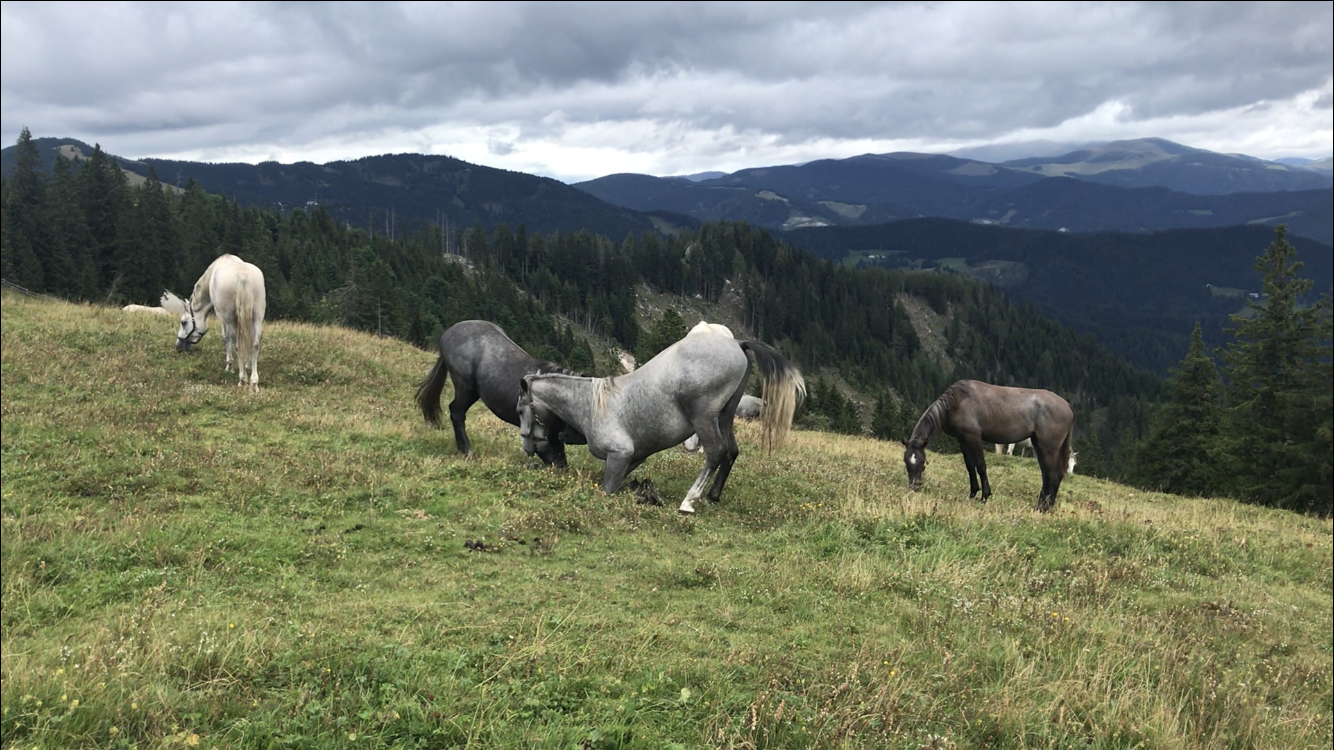Little German Dressage Glossary
As I write this, absolutely nothing in this world is the way it was six months ago. I hope that you and your loved ones are all safe. And that we, collectively, are smart enough to dig our way out of this crisis with cooperation, science, and kindness. Perhaps this article can bring a little distraction and in a best case scenario, an aha-moment.
Being German, I am used to hearing a number phrases frequently during dressage lessons that have no or very imprecise approximations in English. I find this terminology rather helpful in soliciting the correct responses in the rider. Hence I’ve summarized some of my favorites.
Parade - In English, we ask for the half halt (halbe Parade) or a halt (ganze Parade). But there is a lot of confusion about the half halt as it's often reduced to a squeeze with one or both reins. The halt is seen more as a movement than an aid. For the Parade, also called "the mother of all aids," you will first apply your weight, then leg aids, riding from back to front toward the passively resisting hand. This leads to either a half halt or full halt depending on the intensity of the aids. Thinking of the Parade as a series of aids in a particular order, involving your entire body, breathing included, will help you influence your horse correctly.
Du willst zum Treiben kommen - "You want to be able to drive." This refers to the concept that the horse has to be in some state of self-carriage and balance so that the rider gets to apply the driving aids. As long as the horse is "running," the training is not beneficial in terms of the mental and physical development of the horse. Of course this has nothing to do with the horse being behind the leg. That is an even greater fault and the forward response needs to be installed properly first. But if the horse is not on the seat and primarily regulated with the rein, not a lot of productive things can happen.
Die Hände frei Tragen - "Carry the hands freely" is an instruction aimed at soliciting quiet but not stiff hands, in the correct position in front of the saddle, with soft elbows and wrists. As a byproduct, it produces the necessary positive tension in the upper body.
Zur Hand hinreiten - The instruction to "ride toward the hand" is meant to encourage the rider to ride "back to front" and to fiddle less with the hands. It involves driving aids that animate the horse to reach forward into the bit and establish a notable but soft contact with the hand. To ride toward a "freely carried hand" is a great image describing an honest connection.
Von der Hand weg - Being told to get "away from the hand" is geared toward a horse that leans on the rider's hand for balance. The rider needs to ask the horse for more self-carriage without being rough with the hands. Depending on the horse's level of training, transitions, lateral work or leg yields can help.
Umfassen/nachfassen - Novice riders are reminded to adjust or shorten the reins every time they change direction in the technically correct manner by taking the reins into one hand and sliding them through.
Das Pferd schließen, - To "close the horse" refers to animating the hind legs to step further under the center of gravity and the horse to step into a soft and steady contact. You can think of it as the opposite of "strung out." This is different from collection as it is also possible to ride a horse more "closed" in the medium and extended paces in all three gaits. It also implies an uphill tendency.
Das Pferd am äusseren Zügel führen - It means to "lead the horse on the outside rein" and refers to the idea that the outside rein is generally softly on whereas the rider often gives on the inside rein. This is one of the core principles and a premise for being able to ride from the "inside leg to outside rein." It prevents the horse from falling through the outside shoulder and ensures that the rider is not turning by pulling on the inside rein or making the horse crooked by overbending to the inside. At the same time, the outside rein must allow proper flexion and bend.
Auslaufender Übergang - The "petering out transition" can be a fault or a deliberate strategy of riding a transition for quality rather than promptness. The latter teaches the horse to take more weight behind as it takes a few more balanced strides instead of having the horse stiffen. For example, when a horse first learns canter walk transitions, the horse is allowed a few trot steps in between.
Dehnungsbereitschaft abfragen - This means "to test the horse's willingness to stretch" correctly, with the nose in front of the vertical, swinging over his back without loss of rhythm, change in tempo or loss of contact. This is done through Zügel aus der Hand kauen lassen - "letting the horse chew the reins out of the rider's hands." Of course we hear the phrase "now let him stretch" in English lessons as well, but it doesn't emphasize that the horse initiates and maintains a soft contact as the rider slowly lengthens the reins, the horse stretching forward and down (not downwards only). Stretching does not mean throwing away the contact, the back to front connection should remain intact, with the nose in front of the vertical. It is a test of correct training.
Photo: Practicing the Parade. pc: P. Schofler





